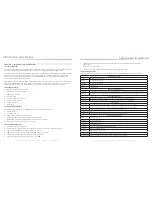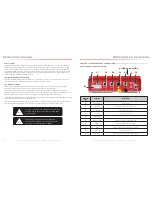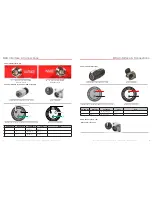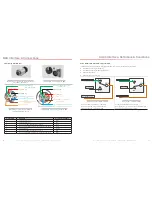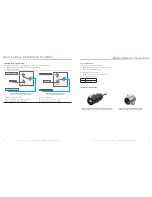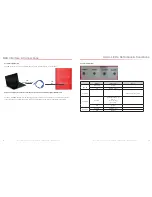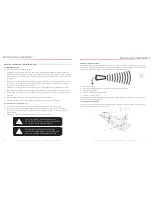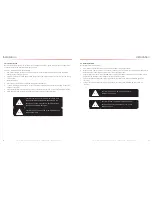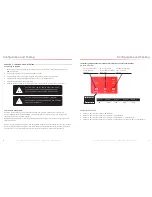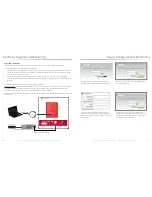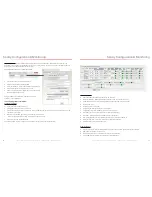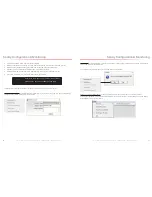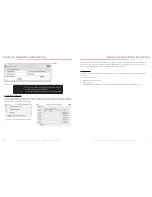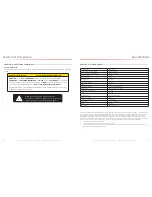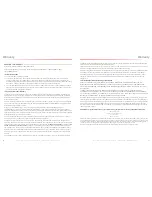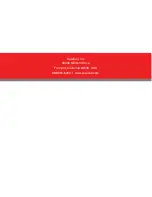
SureCall | 48346 Milmont Drive, Fremont CA 94538 | 1-888-365-6283 | [email protected]
SureCall | 48346 Milmont Drive, Fremont CA 94538 | 1-888-365-6283 | [email protected]
19
18
Dome antennas provide 360-degree hemispherical coverage suitable for mostly square areas, while flat panel anten-
nas provide a focused zone of coverage suitable for long narrow areas. The example above uses two dome antennas
and one panel antenna to provide full coverage
Keep in mind that floor structures in multistory buildings can cause significant signal loss, which means that you may
need to install interior antennas on more than one floor. Here is an example of a multistory installation:
Note: You may not need antennas on every floor of a multistory building, depending on factors such as building
material, BDA gain, etc.
3.4 Antenna Separation
Proper antenna separation prevents signal oscillation (feedback) that can interfere with the radio tower. Separation
is measured in a straight line from the exterior antenna to the closest interior antenna. The closest allowable distance
depends on a number of factors, such as BDA gain level, building material, etc. Recommended separation distances
are:
Amplifier gain
Min. separation (ad)
40 dB
5’-6’
45 dB
15’-20’
50 dB
50’
55 dB
60’
65 dB
75-80’
70 dB
100’
75 dB
100’-120’
80 dB
120’-180’
Vertical separation is more important than horizontal separation. If you are unable to obtain the required separation
Planning the Installation
Planning the Installation
horizontally, try raising the exterior antenna. You may also try reducing the BDA gain as described in Chapter 5 of this
manual.
Antenna Safety Precautions:
You can mix and match dome and directional antennas as needed to obtain proper coverage throughout the building
or area where you need to boost the signal. If you use a Yagi exterior antenna, you should normally aim it away from
all interior antennas, regardless of separation, to prevent oscillation.
3.5 BDA Location
Select an indoor location for the BDA that meets the following criteria:
• Away from tightly enclosed or overly hot spaces
• Near a properly grounded 110VAC outlet
• Power and warning lights are easily visible
• Shortest possible cable runs to all antennas
3.6 Accessories
The final step in the planning process is to make sure you have all of the necessary accessories to complete the
installation. You will need all of the items listed in Chapter 1 of this manual plus some or all of the following:
• Cable clips: Use these to secure the cables to interior and exterior walls/ceilings.
• Appropriately rated sealant/caulking to waterproof exterior cable entry points
• Hand and/or power tools as needed to complete the installation
• Personal Equipment (PPE): Use all PPE required by local codes and/or best practices to help ensure personal
safety during installation.
CAUTION: SIGNAL OSCILLATION CAN CAUSE RADIO
INTERFERENCE WITH RADIO TOWERS AND RESULT IN
CIVIL AND/OR CRIMINAL PENALTIES.
OK
Antenna Aiming
CAUTION: YOU ARE RESPONSIBLE FOR ENSURING
THAT THE INSTALLATION MEETS ALL APPLICABLE
CODES.



